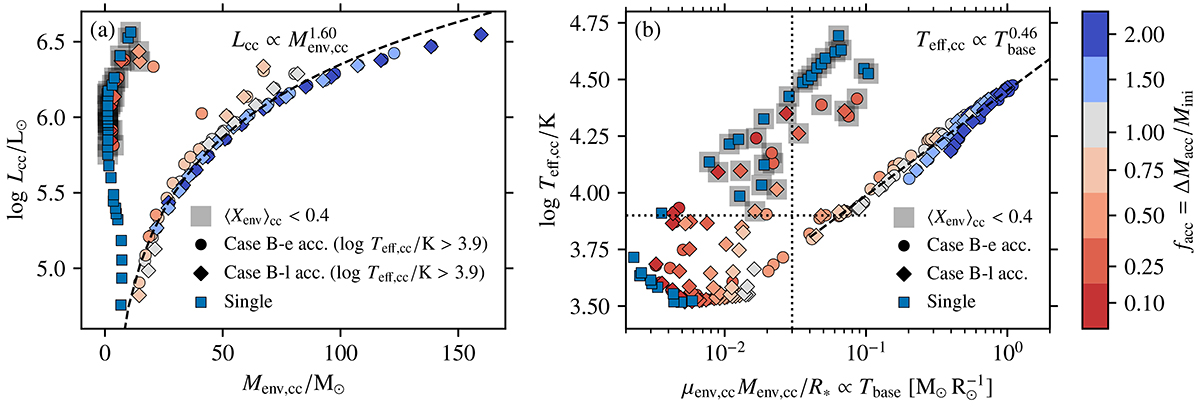Fig. 11.

Download original image
Envelope mass-luminosity relation (panel a) and H-envelope base temperature-effective temperature relation (panel b) for Case B accretors. Single stars are shown for comparison and models with an average hydrogen mass fraction in their envelopes of ⟨Xenv⟩cc < 0.4 are marked. These stars may appear as BSGs at core collapse but their hot Teff, cc is due to the low hydrogen content in their envelopes and not due to a thick convective hydrogen burning shell. Power-law fits are added and the dotted lines in panel b indicate log Teff, cc/K = 3.9 and the transition base temperature at ![]() where we find the BSG solutions. Cases B-e and B-l refer to early and late Case B accretors, respectively.
where we find the BSG solutions. Cases B-e and B-l refer to early and late Case B accretors, respectively.
Current usage metrics show cumulative count of Article Views (full-text article views including HTML views, PDF and ePub downloads, according to the available data) and Abstracts Views on Vision4Press platform.
Data correspond to usage on the plateform after 2015. The current usage metrics is available 48-96 hours after online publication and is updated daily on week days.
Initial download of the metrics may take a while.


